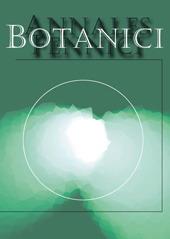Emulating natural disturbances in managed forests has been suggested as a potential solution to maintain habitat conditions similar to those observed in old-growth forests. We examined the gap attributes and disturbance history of old-growth Picea abies-dominated stands in the northern boreal vegetation zone of the Pallas-Yllästunturi National Park in northwestern Finland to evaluate the influence of gaps on forest dynamics and the temporal patterns of gap creation. Six stands located at two sites were sampled along 400-m-long linear transects so that all intersected gaps were measured and dated. The average proportion of the forest area in the gaps was 43.1% ± 7.5%. An average gap size was estimated to be 221 m2 ± 198 m2, whereas the median gap size was 170.2 m2. While only 20% of the gaps were smaller than 100 m2, nearly 85% of them were smaller than 300 m2. Gap creation was constant with no distinct peaks from 1965 to 2005. Thus, forest dynamics were driven by continuous small-scale disturbances and were characterized by quasi-equilibrium structure. However, the results of the growth release analysis indicated that more severe disturbance(s) may have occurred almost two centuries ago. Emulating this type of forest dynamics would imply selective or group harvesting of trees as the predominant methods, but larger-scale, more intensive cuttings could also be carried out periodically.
How to translate text using browser tools
1 August 2009
Canopy Gap Characteristics and Disturbance Dynamics in Old-Growth Picea abies Stands in Northern Fennoscandia: Is the Forest in Quasi-Equilibrium?
Marie-Noëlle Caron,
Daniel D. Kneeshaw,
Louis De Grandpré,
Heikki Kauhanen,
Timo Kuuluvainen
ACCESS THE FULL ARTICLE

Annales Botanici Fennici
Vol. 46 • No. 4
August 2009
Vol. 46 • No. 4
August 2009
boreal forest
dendroecology
Finland
gap dynamics
growth release
natural disturbance
Stand dynamics




